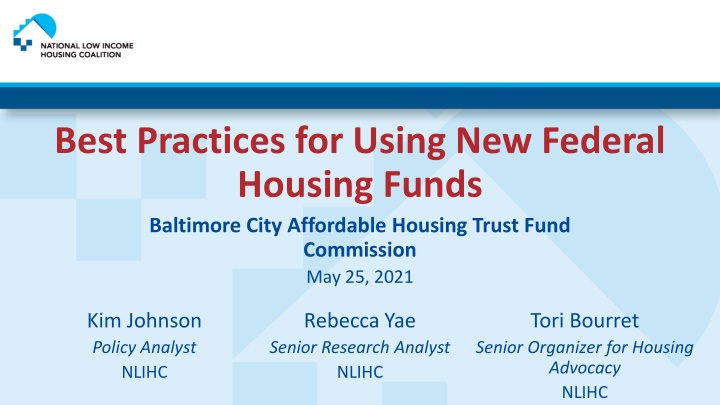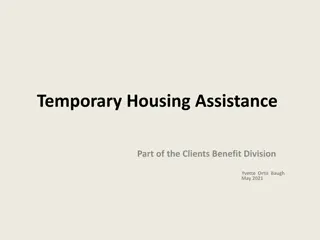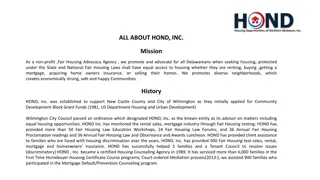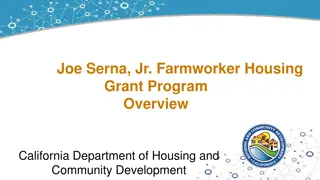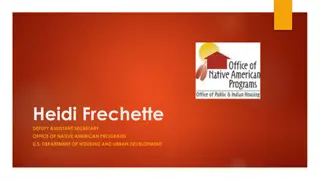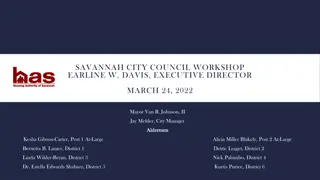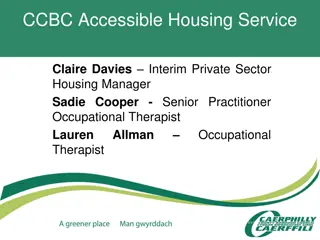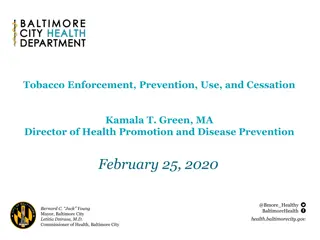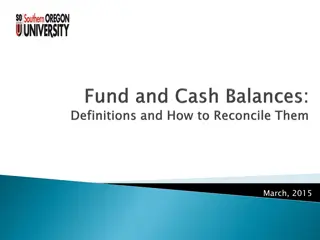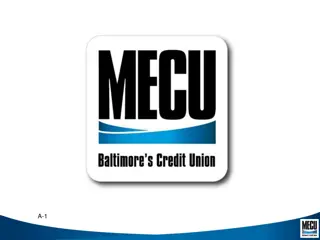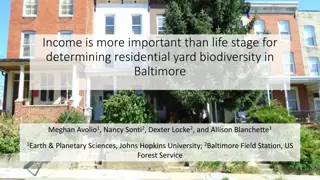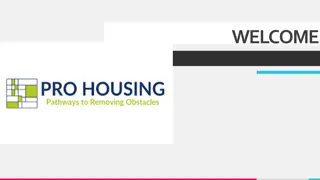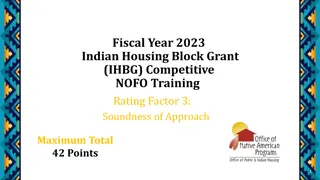Best Practices for Using New Federal Housing Funds in Baltimore City
In May 2021, experts discussed utilizing new federal housing funds for affordable housing in Baltimore City. The sources of funding, emergency housing vouchers, homelessness assistance, and state & local fiscal relief are detailed to guide efficient allocation and implementation strategies.
Download Presentation

Please find below an Image/Link to download the presentation.
The content on the website is provided AS IS for your information and personal use only. It may not be sold, licensed, or shared on other websites without obtaining consent from the author.If you encounter any issues during the download, it is possible that the publisher has removed the file from their server.
You are allowed to download the files provided on this website for personal or commercial use, subject to the condition that they are used lawfully. All files are the property of their respective owners.
The content on the website is provided AS IS for your information and personal use only. It may not be sold, licensed, or shared on other websites without obtaining consent from the author.
E N D
Presentation Transcript
Best Practices for Using New Federal Housing Funds Baltimore City Affordable Housing Trust Fund Commission May 25, 2021 Kim Johnson Policy Analyst NLIHC Rebecca Yae Senior Research Analyst NLIHC Tori Bourret Senior Organizer for Housing Advocacy NLIHC
Sources of Funding Sources of Funding Consolidated Appropriations Act for FY21 (December 2020) $25 billion for emergency rental assistance American Rescue Plan Act (ARPA; March 2021) $21.55 billion for emergency rental assistance $5 billion for emergency housing vouchers $5 billion for homelessness assistance $10 billion for homeowner assistance $120 million for housing counseling and fair housing $5 billion for utility assistance $350 billion for state and local fiscal relief
Emergency Housing Vouchers Emergency Housing Vouchers $5 billion for Emergency Housing Vouchers (EHVs) EHVs specifically for people at risk of or experiencing homelessness, and those fleeing domestic violence, dating violence, sexual assault, stalking, or human trafficking PHAs must partner with CoCs to identify eligible individuals and families $3,500 per voucher for services fee Housing search, security/utility deposit, application/holding fees, moving expenses, essential household items, owner recruitment and outreach Waives certain Housing Choice Voucher (HCV) requirements
Homelessness Assistance Homelessness Assistance $5 billion for homelessness assistance through the HOME Investments Partnership Program (HOME) Development of affordable housing Tenant-based rental assistance and supportive services Acquisition and development of non-congregate shelter units for permanent affordable housing
State & Local Fiscal Relief Fund State & Local Fiscal Relief Fund $350 billion for State & Local Fiscal Relief Assistance to households to respond to the pandemic, including: Rent, mortgage, and utility assistance Counseling and legal aid to prevent evictions or homelessness Cash assistance COVID-19 prevention, mitigation or other services in congregate living facilities Housing-related investments, including: Services to address homelessness Affordable housing development Vouchers, residential counseling, or housing navigation assistance
Emergency Rental Assistance Funding Emergency Rental Assistance Funding $47 billion for emergency rental assistance (ERA) Two buckets: ERA1 (Consolidated Appropriations Act) & ERA2 (ARPA) Similar guidelines, more flexibility in ERA2 Recommended best practices: Flexible program design to extend ERA to hardest-hit communities without imposing burdensome documentation requirements Ex: self attestation, direct-to-tenant payments, prioritization Partnering with organizations already embedded in hard-to-reach communities
Emergency Rental Assistance Database Emergency Rental Assistance Database As of May 24, NLIHC was tracking over 995 programs, 374 of which are Treasury ERA programs that are open/close to opening: - 50 states (includes Washington, D.C.) - 228 local jurisdictions - 96 territories/tribal entities $21.684 billion actively being implemented For the interactive table, visit: https://nlihc.org/rental-assistance
New Treasury Guidance New Treasury Guidance Strong discouragement of burdensome documentation requirements Requirement to provide direct-to-tenant assistance Programs allowed to provide payment first to tenants with ERA2 Caution against excluding tenants with federal rent subsidies or living in federally subsidized housing Prohibition of exclusion with ERA2 Stronger tenant protections required when payment made to landlord Access for people currently experiencing homelessness
ERA Dashboard ERA Dashboard Data valid as of May 24, 2021 For the interactive dashboard, visit: https://nlihc.org/era-dashboard
ERA Resource Hub ERA Resource Hub Categories 1. Self-attestation 2. Direct-to-tenant assistance 3. Prioritization examples 4. Sample applications 5. Program dashboards 6. Evaluation report 7. Outreach materials and toolkits 8. ERA research and reports For the resource hub, visit: https://nlihc.org/resource-hub
Additional Resources Additional Resources Resources: Resources: NLIHC Emergency Rental Assistance Database NLIHC Emergency Rental Assistance Dashboard NLIHC Emergency Rental Assistance Resource Hub Fact sheets: Fact sheets: Revised ERA Guidelines American Rescue Plan Act Reports and briefs: Reports and briefs: Joint research with Housing Initiative at Penn and NYU Furman Center: Learning from Emergency Rental Assistance Programs; COVID-19 Emergency Rental Assistance: Analysis of a National Survey of Programs; Advancing Racial Equity in Emergency Rental Assistance Programs Best Practices for State and Local Emergency Rental Assistance Programs
State & Local Examples State & Local Examples
Thank You! Thank You! Tori Bourret vbourret@nlihc.org Rebecca Yae ryae@nlihc.org Kim Johnson kjohnson@nlihc.org
